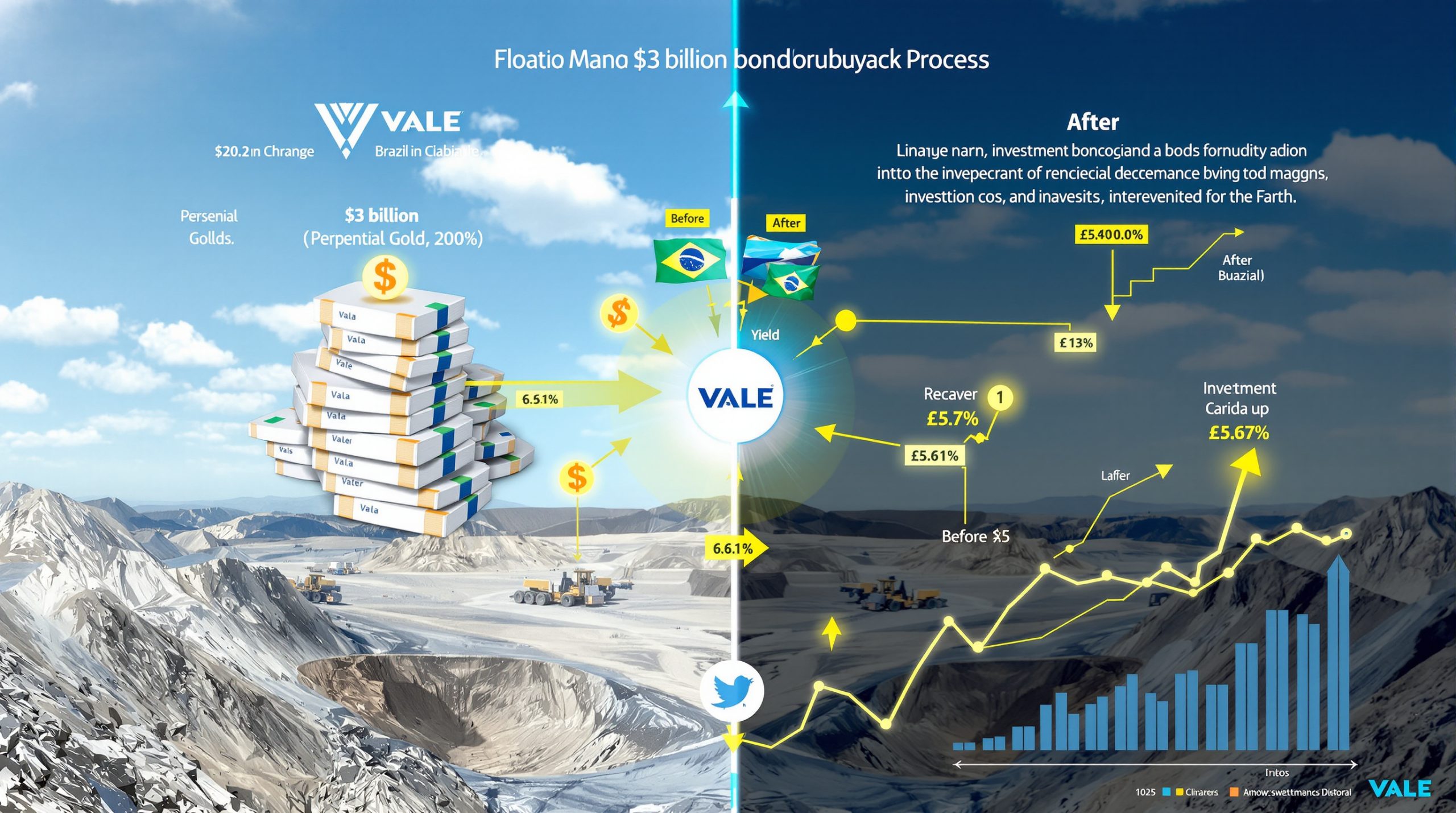Understanding Aluminum Price Dynamics: Short-Term Support vs. Mid-Term Volatility
In the complex world of commodity markets, aluminum prices continue to navigate between competing forces: inventory-driven support in the short term and macro-driven volatility in the medium term. This analysis delves into the key factors shaping aluminum price movements and provides insights into what market participants should monitor in the coming months.
What Are the Key Macro Factors Affecting Aluminum Prices?
The aluminum market faces increased volatility as several macroeconomic factors converge to create uncertainty in both supply and demand dynamics.
Federal Reserve Policy Uncertainty
Internal disagreements within the Federal Reserve have intensified regarding interest rate trajectories, creating significant market uncertainty. According to the SMM Aluminum Morning Meeting Summary (July 10, 2025), most officials support rate cuts within 2025, while hawkish members advocate maintaining current rates due to persistent concerns about tariffs economic implications on inflation.
This monetary policy uncertainty has directly contributed to price volatility across commodity markets, with aluminum being particularly sensitive to shifts in interest rate expectations due to its capital-intensive production process and role in global trade.
"The core of the disagreement within the Fed lies in the persistent impact of tariffs on inflation, creating a policy divergence that's unlikely to resolve quickly," noted SMM analysts in their July 10 briefing.
The aluminum market typically experiences a 2-3% price swing following significant Fed announcements, highlighting the metal's sensitivity to monetary policy signals.
Global Trade Tensions and Tariff Impacts
Trade relations between major economies continue deteriorating, with the European Union implementing retaliatory trade measures against the US effective July 14, 2025.
Bernd Lange, Chairman of the European Parliament's Committee on International Trade, stated: "The current trade dispute between the EU and the US remains focused on tariffs in specific industries, particularly steel, automobiles, copper, and possibly pharmaceutical products."
These escalating trade barriers are creating supply chain disruptions across industrial metals, with aluminum experiencing secondary effects as related sectors face direct tariffs. The resulting cost increases are potentially passing through to aluminum production expenses through higher energy, logistics, and input material costs.
Key sectors targeted by EU countermeasures:
- Steel production
- Automotive manufacturing
- Copper processing
- Potential expansion to pharmaceuticals
Supply Chain Disruptions
Global logistics networks continue experiencing pressure from trade conflicts, creating bottlenecks in raw material supply chains critical for aluminum production. Regional shipping constraints have limited aluminum ingot arrivals in key markets, particularly affecting East Asian distribution hubs.
These disruptions have amplified inventory management challenges, contributing to localized price premiums and increased volatility across regional markets. The aluminum supply chain's complexity makes it particularly vulnerable to these logistical constraints, as production requires timely delivery of bauxite, alumina, and energy inputs.
How Are Inventory Levels Influencing Current Aluminum Prices?
While macroeconomic factors create uncertainty, current inventory levels provide a foundation for understanding near-term price support.
Social Inventory Destocking Patterns
Total primary aluminum ingot inventory in major consumption areas reached 466,000 metric tons as of July 10, reflecting an 8,000 metric ton decrease from the previous week and a 12,000 metric ton decline from Monday alone. This accelerating destocking pattern suggests fundamental tightness in the physical market despite seasonal demand weakness.
Regional inventory breakdown shows concentrated depletion:
- Guangdong: 140,500 metric tons
- Wuxi: 112,500 metric tons
- Gongyi: 72,500 metric tons
The combined three-region total of 325,500 metric tons represents a 6,500 metric ton daily decrease, highlighting the intensity of the current destocking trend.
Supply-Side Production Adjustments
Despite low inventories, supply responses have been limited. SMM reports that while some aluminum smelters increased casting ingot production in certain regions, arrivals of new supply remain constrained. Several smelters have redirected supply from central China to surrounding areas, creating regional imbalances that further complicate the inventory picture.
A particularly noteworthy development involves large traders actively hoarding warrants to manage potential short squeeze risks. This practice—where traders secure ownership documentation for physical metal—restricts available supply beyond what warehouse numbers alone might suggest.
Inventory-Price Relationship Dynamics
The current low inventory levels provide a price floor support mechanism that has prevented significant downward movements despite seasonal demand weakness. Limited new arrivals are preventing significant inventory rebuilding, maintaining the short-term destocking trend that supports price resilience.
This inventory tightness is most pronounced in specific regional markets, creating localized premiums that influence the broader national price benchmarks. Historically, inventory levels below 500,000 metric tons have provided significant price support in Chinese markets, making the current 466,000 metric ton level particularly significant.
What's Happening in the Chinese Aluminum Futures Market?
Futures markets provide key insights into trader expectations and risk positioning within the aluminum sector.
Recent Price Performance
The SHFE aluminum 2508 contract demonstrated notable resilience in the previous session:
- Opening price: 20,520 yuan/mt
- Session high: 20,730 yuan/mt
- Session low: 20,515 yuan/mt
- Closing price: 20,685 yuan/mt
Trading activity showed moderate engagement, with volume reaching 77,000 lots and open interest at 254,000 lots, suggesting stable market participation despite macroeconomic uncertainties.
LME Aluminum Price Movements
The international benchmark London Metal Exchange (LME) aluminum contract traded within a narrow range:
- Opening price: $2,600.5/mt
- Session high: $2,602/mt
- Session low: $2,597/mt
- Closing price: $2,602/mt
This compressed trading range indicates a consolidation phase as traders assess competing market factors. The stability in LME prices suggests global market participants are similarly balancing inventory support against macroeconomic concerns.
Regional Price Spreads and Premiums
Regional price dynamics reveal important market imbalances:
- SMM A00 aluminum spot price: 20,660 yuan/mt (up 60 yuan/mt day-over-day)
- Discount against 07 contract: 50 yuan/mt (unchanged)
- Central China A00 aluminum price: 20,550 yuan/mt
- Price spread between Henan and Shanghai: -110 yuan/mt (narrowed by 10 yuan/mt)
- Discount against 2507 contract: 160 yuan/mt
The narrowing price spread between regional markets indicates improving distribution despite logistical challenges. However, the persistent discount in Central China reflects continuing regional supply-demand imbalances that create arbitrage opportunities for traders.
How Is Seasonal Demand Affecting the Aluminum Market?
Seasonal factors play a crucial role in short-term aluminum price movements, particularly during traditional demand lulls.
Downstream Consumption Patterns
July typically brings a strong off-season atmosphere across downstream aluminum-consuming sectors, and 2025 is following this established pattern. High aluminum prices have suppressed production performance across fabricators and end-users, creating a negative feedback loop that limits demand recovery.
Just-in-time procurement has slightly rebounded as prices stabilized, indicating some price elasticity in immediate consumption. However, spot market transactions remain suboptimal despite price adjustments, suggesting fundamental demand weakness rather than simply price sensitivity.
Regional Market Dynamics
East China is experiencing slight daily inventory decreases despite the seasonal lull, with spot premiums stabilizing against the SMM average price. This relative resilience suggests underlying strength in the region's industrial base.
In contrast, Central China market activity has pulled back more significantly during the seasonal lull, contributing to the narrowing regional price spreads noted earlier. This divergence highlights the importance of regional factors in understanding the overall market dynamic.
Seasonal Impact on Price Direction
The traditional summer off-season is limiting upside price potential despite inventory support. Weak order flow is constraining bullish momentum, while export barriers are compounding seasonal demand weakness by limiting international sales opportunities.
Just-in-time buying provides only limited support during this period, as manufacturers remain cautious about building significant inventory ahead of uncertain autumn demand patterns. This seasonal pattern typically resolves in late August as manufacturers begin preparation for the autumn production cycle.
What's Happening in the Secondary Aluminum Market?
The secondary aluminum market provides important insights into overall supply chain health and cost structures.
Scrap Aluminum Price Trends
Scrap aluminum prices show surprising strength despite seasonal weakness in finished product demand:
- Baled UBC (Used Beverage Can) aluminum scrap quotes: 15,300-15,800 yuan/mt (tax-exclusive)
- Shredded aluminum tense scrap quotes: 15,900-17,400 yuan/mt (tax-exclusive)
Baled UBC prices have rebounded by 50 yuan/mt month-over-month, indicating tightening scrap availability despite seasonal consumption patterns. Regional price adjustments show significant variation:
- Shanghai, Jiangsu, Shandong: 50-100 yuan/mt adjustments upward
- Guizhou, Hunan: Unchanged quotes
- Jiangxi: Maintaining stability after previous concentrated price increases
This divergence reflects the localized nature of scrap collection networks and varying regional industrial activity levels.
Supply Constraints in Secondary Markets
Both domestic and overseas aluminum scrap supplies have tightened significantly, intensifying competition for raw materials among secondary smelters. This tightness represents a structural rather than seasonal factor, as global collection networks face continuing challenges.
Rising production costs have expanded loss-making operations across the secondary aluminum sector, prompting multiple secondary aluminum smelters to implement production cuts. Some facilities have entered a complete shutdown state, further constraining secondary metal availability.
These supply limitations in secondary markets indirectly support primary aluminum prices by reducing available substitutes for fabricators and end-users.
Secondary Aluminum Alloy Market
The cast aluminum alloy 2511 futures contract closed at 19,830 yuan/mt, representing a 20 yuan/mt (0.10%) decrease from the previous session. Trading activity remained modest with volume at 2,249 lots and open interest at 8,571 contracts, dominated by bulls reducing positions.
The SMM ADC12 spot price has maintained stability at 20,000 yuan/mt despite production cuts, reflecting the balanced tension between weak demand and strong cost support. This creates a rangebound price pattern that may persist until either demand recovers or supply constraints intensify further.
What's the Short-Term Outlook for Aluminum Prices?
The aluminum market's outlook balances several competing factors that create both support and resistance for prices.
Supportive Factors
Several factors provide fundamental price support:
- Low inventory levels creating a price floor
- Limited new supply arrivals preventing inventory rebuilding
- Production cost pressures supporting price resilience
- Raw material constraints limiting production expansion
These structural supports suggest prices are unlikely to collapse despite seasonal demand weakness, providing a foundation for market stability.
Constraining Factors
Counterbalancing these supports are several limiting factors:
- Seasonal demand weakness during summer months
- Export barriers limiting international sales opportunities
- High prices suppressing downstream consumption
- Macro uncertainties creating cautious market sentiment
The combination of these factors creates a ceiling on near-term price appreciation potential, despite the fundamental supply tightness.
Key Metrics to Monitor
Market participants should focus on several critical indicators:
- Casting ingot production volumes
- Aluminum ingot shipment schedules
- Daily and weekly inventory changes
- Regional price spread developments
- Secondary aluminum production rates
- Downstream order flow recovery signals
Changes in these metrics will provide early warning of shifts in the market's fundamental balance.
Price Direction Expectations
The outlook can be summarized across different time horizons:
- Short-term (1-4 weeks): Resilient prices supported by low inventories
- Medium-term (1-3 months): Increased downside risks at elevated price levels
- Upside potential remains but with limited range
- Heightened volatility expected as macro factors intensify
The interaction between inventory support and demand weakness creates a market particularly sensitive to new information, suggesting traders should remain vigilant for potential inflection points.
How Are Trade Policies Affecting the Aluminum Market?
Trade policy developments have emerged as a critical driver of aluminum market dynamics in 2025.
EU-US Trade Tensions
The EU's first phase of countermeasures against US tariffs automatically takes effect July 14, targeting sectors including steel, automobiles, and copper. While aluminum is not directly named in the initial measures, the metal's integration across these targeted value chains creates significant indirect exposure.
As Bernd Lange noted, these measures represent only the "first phase" of potential escalation, suggesting aluminum could face similar direct trade barriers in subsequent rounds. The resulting US–China trade war impact will likely intensify across industrial metals as companies adjust procurement strategies.
Impact on Global Aluminum Flows
Trade tensions are already redirecting global aluminum flows as exporters seek alternative markets for their production. This redirection creates potential for widening regional price disparities as traditional trade patterns adjust to new barriers.
Compliance costs for cross-border aluminum trade have increased substantially, with documentation requirements, origin certification, and tariff management adding approximately 2-3% to transaction costs according to market participants. These increased friction costs contribute to price premiums in affected markets.
The competitive landscape for aluminum-intensive industries is shifting in response, with manufacturers reassessing supply chain strategies and potentially relocating production to minimize tariff exposure.
Policy Monitoring Priorities
Market participants should closely monitor several policy developments:
- Implementation details of EU countermeasures
- Potential US response to EU actions
- Broader trade policy developments affecting industrial metals
- Regional regulatory changes impacting aluminum production costs
The evolution of these policies will significantly influence both regional and global aluminum price dynamics through 2025 and beyond.
FAQ About Aluminum Price Factors
How do inventory levels affect aluminum prices?
Low inventory levels typically support aluminum prices by creating supply tightness, while high inventories generally pressure prices downward. Currently, the ongoing destocking trend in social inventories (down to 466,000 metric tons) is providing price support despite seasonal demand weakness.
When inventory levels approach the 400,000 metric ton threshold in Chinese markets, historical patterns suggest significant upward price pressure becomes likely, particularly if restocking demand emerges simultaneously.
What impact do Federal Reserve policies have on aluminum markets?
Fed policies affect interest rates and the US dollar value, which directly influence aluminum prices and macro factors. Higher interest rates typically strengthen the dollar, making dollar-denominated aluminum more expensive for foreign buyers, potentially reducing demand and pressuring prices.
Additionally, interest rate changes affect financing costs for aluminum stockholders and producers, influencing inventory carrying decisions and production economics. The current Fed policy uncertainty has contributed to price volatility as market participants adjust positions based on evolving rate expectations.
How do seasonal factors affect aluminum demand?
Aluminum demand typically experiences a summer lull in July-August, with reduced construction and manufacturing activity. This seasonal pattern creates cyclical price pressure that must be balanced against supply-side factors when forecasting price movements.
The seasonal weakness is particularly pronounced in construction-related applications but less significant in packaging and transportation sectors. Market participants generally anticipate this pattern and adjust inventory strategies accordingly, moderating price impacts.
What role do secondary aluminum markets play in price formation?
Secondary aluminum provides an alternative supply source that can help moderate primary aluminum prices. However, when scrap supplies tighten (as currently observed), this alternative becomes less available, potentially supporting primary aluminum prices.
The current production cuts across secondary smelters due to raw material shortages and cost pressures illustrate how interconnected these markets have become. The price relationship between primary and secondary aluminum serves as an important indicator of overall market health and balance.
How might trade tensions impact aluminum prices in the coming months?
Escalating trade barriers between major economies could disrupt established supply chains, potentially creating regional price disparities and increased volatility. The implementation of new tariffs or quotas could raise costs throughout the aluminum value chain.
While primary aluminum has not yet been directly targeted by EU countermeasures, its extensive use in affected sectors creates significant indirect exposure. Market participants should prepare for potential direct targeting in subsequent rounds of trade measures, which could create more pronounced regional price disconnections.
Key Aluminum Market Statistics Table
| Metric | Current Value | Change | Impact |
|---|---|---|---|
| Primary Aluminum Inventory | 466,000 mt | -8,000 mt week-over-week | Bullish |
| Three-Region Inventory | 325,500 mt | -6,500 mt day-over-day | Bullish |
| SMM A00 Spot Price | 20,660 yuan/mt | +60 yuan/mt day-over-day | Bullish |
| SHFE 2508 Contract Close | 20,685 yuan/mt | – | Neutral |
| LME Aluminum Close | $2,602/mt | – | Neutral |
| Henan-Shanghai Price Spread | -110 yuan/mt | Narrowed by 10 yuan/mt | Neutral |
| UBC Scrap Price Range | 15,300-15,800 yuan/mt | +50 yuan/mt month-over-month | Bullish for costs |
| ADC12 Alloy Price | 20,000 yuan/mt | Unchanged | Neutral |
Further Exploration:
Readers interested in learning more about aluminum market dynamics can also explore related commodity trading insights and [mining industry evolution](https://discoveryalert.com.au/news/mining-industry-evolution-2025-
Want to Profit from the Next Major Mineral Discovery?
Stay ahead of the market with Discovery Alert's proprietary Discovery IQ model, delivering instant notifications of significant ASX mineral discoveries and turning complex data into actionable investment insights. Explore historical examples of exceptional returns on our discoveries page and position yourself to capitalise on the next major mineral find.




